Wire fence is a broad term that encompasses different types of farm fence constructed from metal strands of wire. However, they all have the one thing in common. They contain some form of wire.
Farms, ranches and large properties all use wire fence. The primary function of wire field fence is keeping animals and livestock secure. The intended use of the fence will determine what type is required. In this article, we’ll review four common types of wire fence.
Types of Wire Fencing for Farm and Field
There are many types of wire fence. Welded wire fence, woven wire fence, high tensile fence and barbed wire fence are the most common types of wire farm fence. Each type of field fence has advantages as well as disadvantages over the others.
Some are better for large amounts of linear footage due to being cost effective. Other types are better for keeping smaller farm animals secure. The topography of the land also influences what type of fence you choose. Let’s dive in and take a look at each one!
Welded Wire Fence Applications
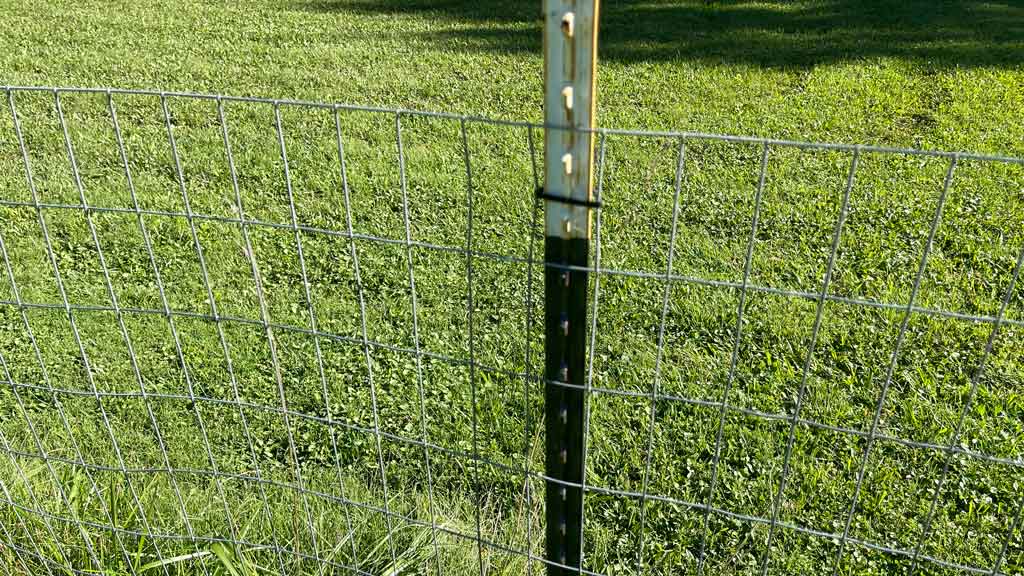
Vertical and horizontal strands of wire welded together form welded wire fence. Standard mesh sizes for welded wire fence are 2″ x 3″ or 2″ x 4″ forming rectangular patterns in the wire fence roll.
Welded wire fence has wire strands welded perpendicular to each other, forming right angles. As a result, it does not flow over uneven terrain very well. Therefore, making welded wire field fence better suited for flat open fields and pastures.
Welded wire fence uses a thinner wire gauge. As a result, it does not work well for larger animals like cows and horses, which require a much stronger type of farm fence. Furthermore, it does not stretch as well as other types of wire fence. Standard heights for welded wire fence start at 36″ tall and go up to 96″ tall.
Woven Wire Fence Applications
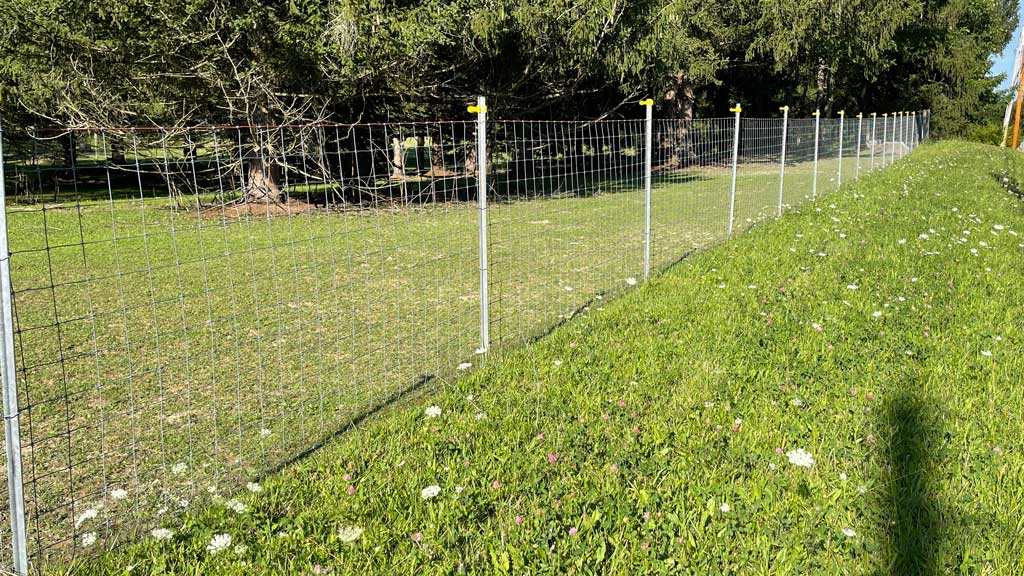
Llike welded wire, woven wire farm fence is constructed from vertical and horizontal strands of wire. However, a special knot ties the intersecting points together in place of a weld. This knot allows woven wire to flow over rolling hills and uneven terrain better.
The wire gauge of the strands are also thicker. As a result, allowing woven wire field fence to stretch tighter over longer lengths without breaking.
There are multiple mesh sizes available. For fencing in smaller animals, use 2″ x 4″ and 4″ x 4″ mesh size. The 2″ x 4″ No Climb mesh is an excellent and safe solution for horses.
Wider mesh patterns are available for larger animals like cattle. Graduated mesh pattens are available that start off small at the bottom of the fence with spacing between the strands growing larger after each row.
Standard heights start at 48″ tall and go up to 96″ tall.
High Tensile Fence Specifications
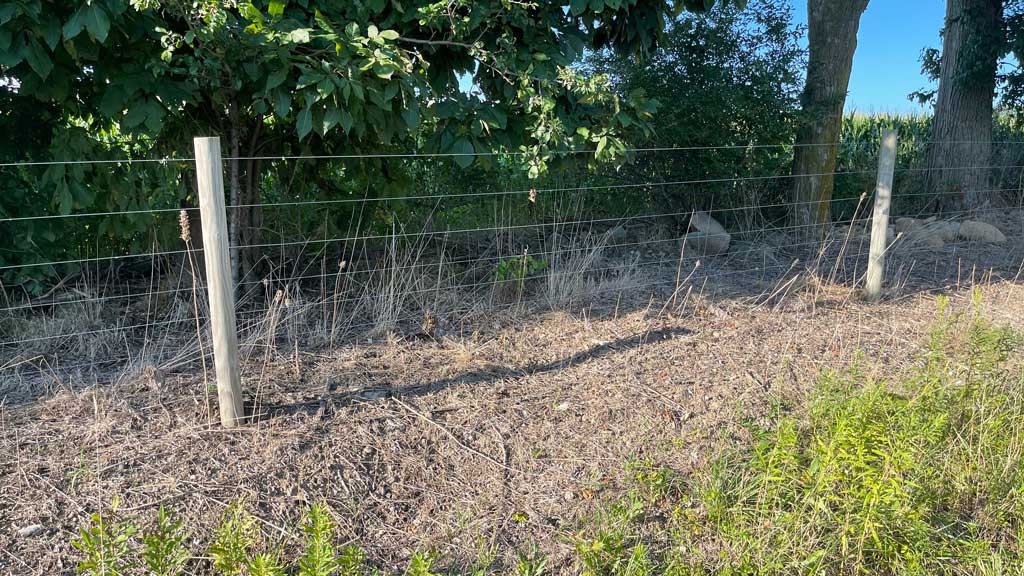
High tensile fence uses a special type of wire that does not break under high tension. The height of the fence is determined by the amount of strands it has. The amount of space between each strand also effects the height. 5 and 6 strands are common.
High tensile fence is great for fencing large tracts of land or long distances. Because the bottom strand does not make contact with the ground, this type of wire field fence installs well over uneven or hilly ground.
Sometimes a strand or two high tensile fence is electrified in order to prevent animals from rubbing against the fence. It is easy to install and relatively affordable as compared to other types of wire fence.
Barbed Wire Fence Specifications
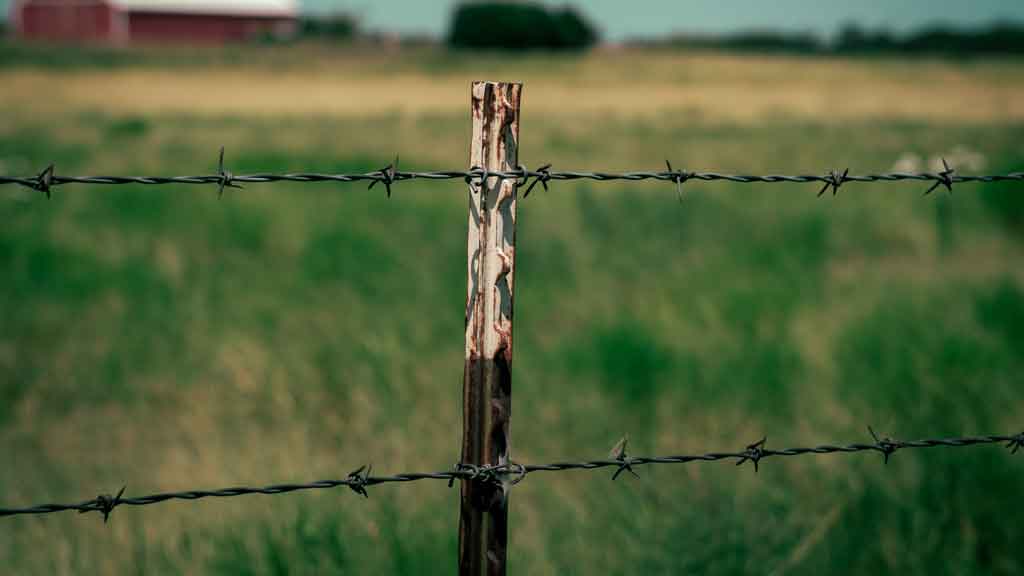
Installing barded wire fence is just like high tensile fence. However, there are two primary differences. First, a single strand of barbed wire is constructed from two smaller strands of wire instead of one.
Second and most obvious, the strands contain sharp barbs. 5 and 6 strand configurations of this type of field fence work best for containing livestock. The barbs prevent persuasive animals from rubbing against or pushing through the fence.
As a result, barbed wire works well when electrifying the fence is not an option due to a lack of a power source.
Barbed wire flows over uneven terrain well. Easy to install, many ranchers and farmers tackle installation themselves. Cost effective, barbed wire is great for large parcels of land.
What About Fence Posts for Wire Field Fencing?
Fence posts hold the fence upright. All four types of fences discussed use the same posts. Or at least a variation of the post options.
Often made from wood, end, corner and gate posts are more stout and larger diameter. The next post in line will be brace posts. Brace posts tie into the end, corner and gate posts with a horizontal member called the brace. The combination of these two wooden fence posts holds tension caused by stretching the wire fence.
Line posts make up the rest of the posts. Wood and metal are the most popular materials. Line post spacing is determined by how tall the fence is and what you are trying to keep secure. Common line post spacing is 8′, 10, or 12′ on center.
However, some high tensile and barbed wire fences have post spacing of up to 25′ on center for lighter duty installations.
Wood Posts for Wire Field Fencing
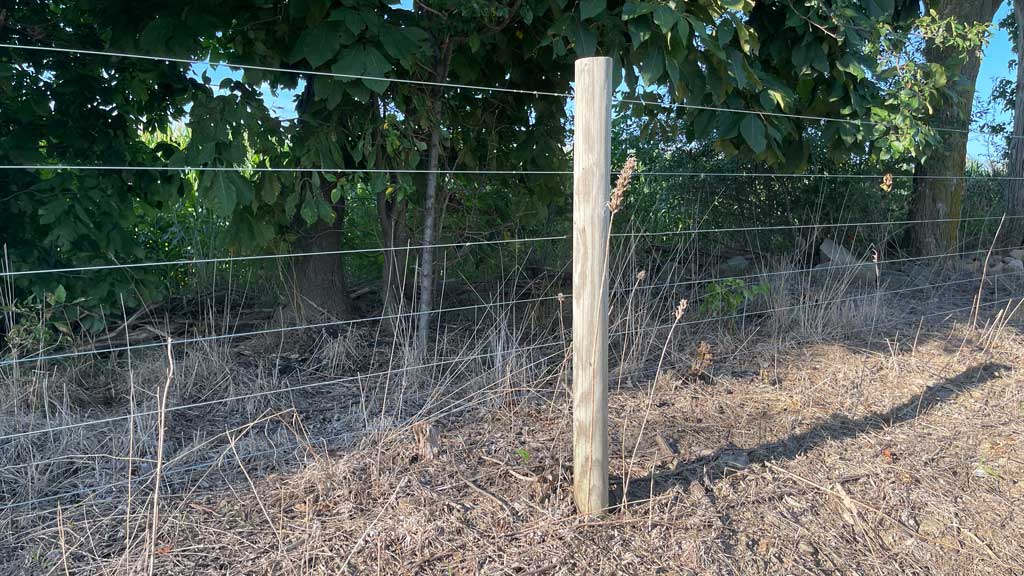
Many wire fences are installed onto wooden posts. Wooden fence posts can be round or square. The size and spacing of the posts is determined by the style of fence you are installing and what its used for.
A special machine called a post driver pounds wooden posts into the ground. Sometimes wood posts are concreted into the ground. However, concrete is not required for most installations. Not to mention, concrete drives up the cost of fence installations.
Round wood posts come in different diameters. Line posts are normally 3.5″ to 5″ in diameter. The end, corner and gate posts are 6″ – 8″ in diameter.
A horseshoe nail or fence staple attaches the fence to wood posts. Wood posts are great for adding extra strength and for permanent fence installs.
Metal T-Posts and Star Pickets for Wire Fencing
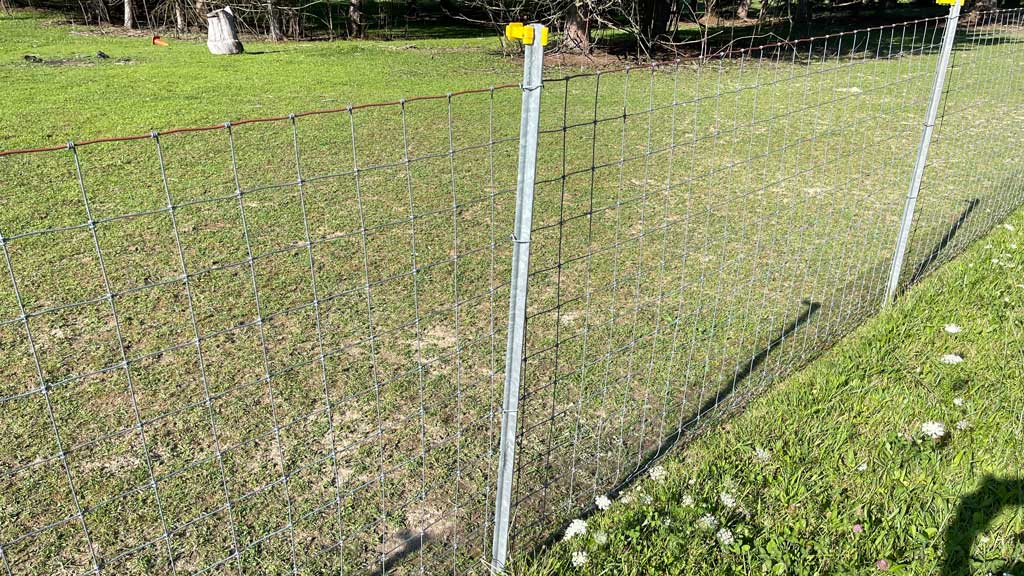
Metal T-posts and star pickets are an affordable option for wire fence installations. They are easy to install with a simple post driver or sledgehammer.
Most metal T-posts and star pickets are painted. However, galvanized coatings are also an option. Metal posts last a long time. Therefore, there is no need to worry about rotting or decaying.
Fence ties or clips attach fence to a metal posts. Because they are affordable, metal T-posts and star pickets are used for longer fence lines. They are also commonly used for temporary fence.
A Combination of Both Metal and Wood Fence Posts
A combination of both wood posts and metal posts provides advantages of each post type. Wood posts are stronger and better suited to hold the weight of the stretch. Metal T-posts and star pickets are more cost effective and easier to install.
A normal installation using both post types uses wood posts between multiple metal posts. Wood posts are set anywhere from 50 – 100 feet apart with the remaining posts being the metal posts.
Final Thoughts about Wire Fence
Wire fences are great for covering large areas like fields and pastures. Perfect for containing cattle or horses. Most styles are affordable and easy to install. Therefore, most property owners have no problem installing one themselves.
To learn more about other types of pasture fence, view our article on wood farm fence designs and styles.

